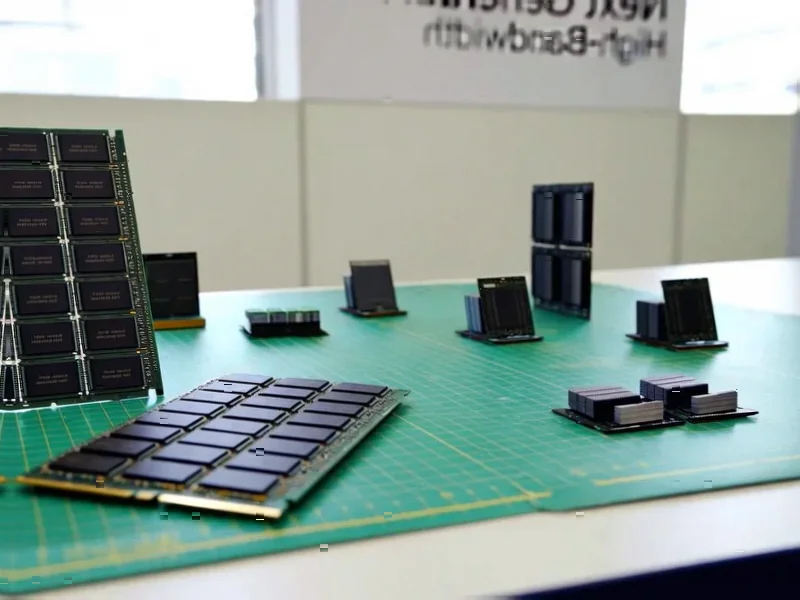According to TheRegister.com, Microsoft announced two massive AI infrastructure deals totaling approximately $17.6 billion, including a $7.9 billion investment in the UAE from 2026-2029 with $5.5 billion for AI/cloud infrastructure and $2.4 billion in local operating expenses, plus a $9.7 billion GPU services contract with Iren Limited in Texas deploying advanced GB300 GPUs equivalent to 60,400 A100 chips. Meanwhile, Alphabet is raising substantial capital through bond sales, including €3 billion ($3.5 billion) in Europe and up to $15 billion in the US, following Meta’s recent $30 billion bond offering for AI infrastructure. This unprecedented capital deployment comes despite Forrester research indicating potential enterprise AI spending pullbacks due to widening gaps between vendor promises and delivered value.
The GPU Supply Chain Becomes Geopolitical
Microsoft’s achievement in securing export licenses for advanced GB300 GPUs to the UAE under the current administration reveals how AI infrastructure has become a matter of national security and foreign policy. The approval process for shipping equivalent-to-60,400-A100-chips worth of computing power demonstrates that GPU exports are now treated with similar scrutiny to other dual-use technologies. This creates both opportunities and challenges for global AI deployment, as companies must navigate complex regulatory environments while maintaining competitive infrastructure advantages. The geopolitical dimension adds another layer of complexity to an already supply-constrained market for advanced AI chips.
The Liquid Cooling Infrastructure Challenge
The Iren Limited partnership highlights a critical technical bottleneck in AI infrastructure: thermal management. The deployment of liquid-cooled datacenters supporting 200 MW of IT infrastructure represents a fundamental shift from traditional air-cooled server farms. Advanced AI clusters generate unprecedented heat densities that conventional cooling cannot handle efficiently. This transition requires complete re-engineering of data center architecture, from rack-level cooling to facility-wide thermal management systems. The capital expenditure for such infrastructure upgrades represents a significant portion of the billions being deployed, beyond just the GPU hardware costs themselves.
The AI Capital Structure Transformation
Alphabet’s bond sales signal a strategic shift in how tech giants are financing their AI ambitions. Raising €3 billion in Europe and up to $15 billion in the US, following their earlier €6.75 billion offering, demonstrates that even cash-rich companies are turning to debt markets to fund AI infrastructure. This suggests that internal cash flows cannot keep pace with the capital intensity required for AI scale-up. The bond market’s appetite for this debt will test investor confidence in AI ROI timelines, particularly as Forrester’s warnings about enterprise spending pullbacks create uncertainty about near-term revenue generation from these massive investments.
The Power Infrastructure Reality Check
The 200 MW requirement for Iren’s Texas campus underscores the energy intensity of modern AI workloads. To put this in perspective, 200 MW could power approximately 150,000 homes, representing a single customer’s AI infrastructure demand. This scale of power consumption creates dependencies on regional grid stability and raises questions about sustainability commitments. Companies must now factor in not just compute capacity but also long-term power procurement strategies, potentially driving investments in dedicated energy generation and storage solutions. The convergence of compute and energy infrastructure represents one of the most significant technical challenges in scaling AI to its promised potential.
Mounting Technical Debt in AI Infrastructure
The rapid deployment of specialized AI infrastructure creates substantial technical debt that could constrain future innovation. Companies are making architectural decisions today that will lock them into specific compute paradigms for years. The GB300 GPUs and equivalent architectures represent significant commitments to particular AI acceleration approaches, potentially limiting flexibility as new AI models and techniques emerge. This infrastructure arms race risks creating stranded assets if AI development directions shift unexpectedly, making the current spending spree both necessary for competitiveness and potentially risky from a long-term technical perspective.




